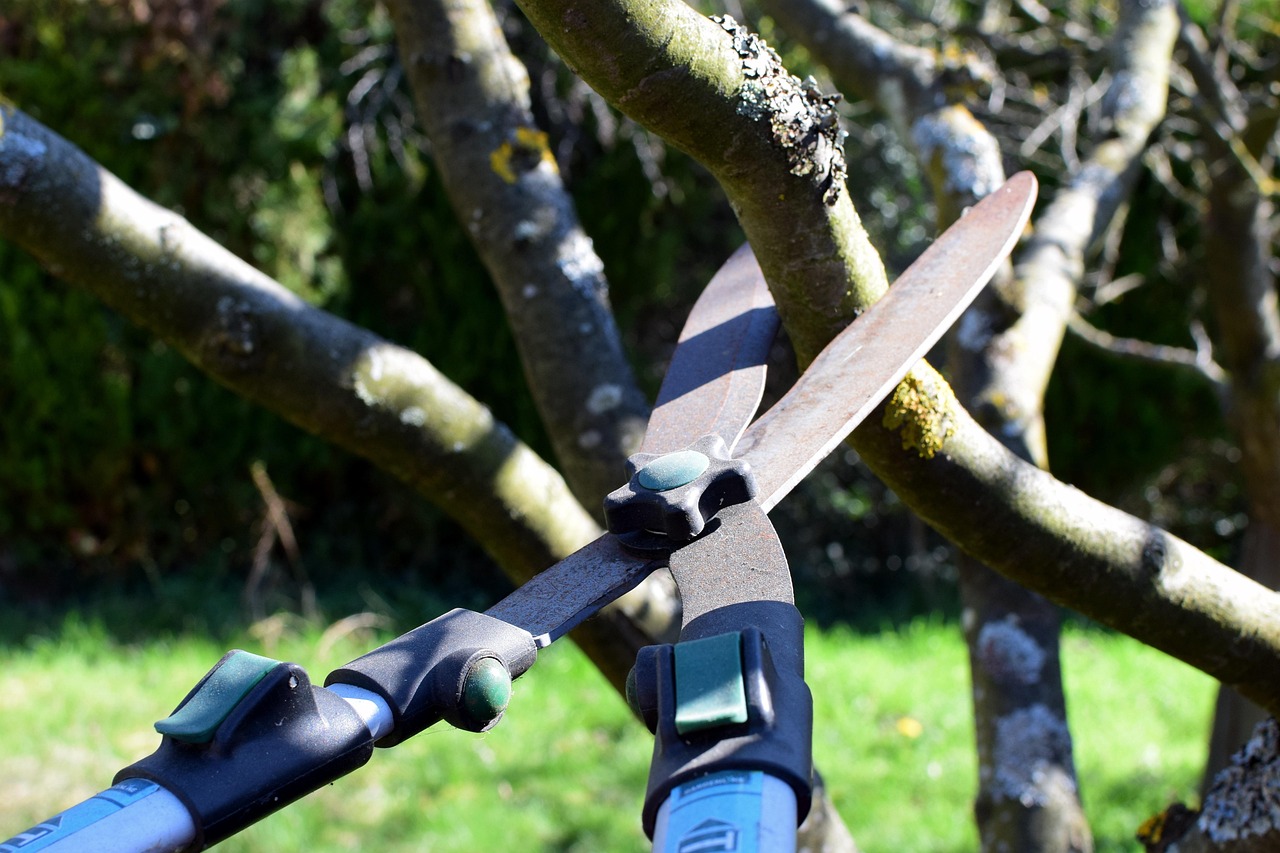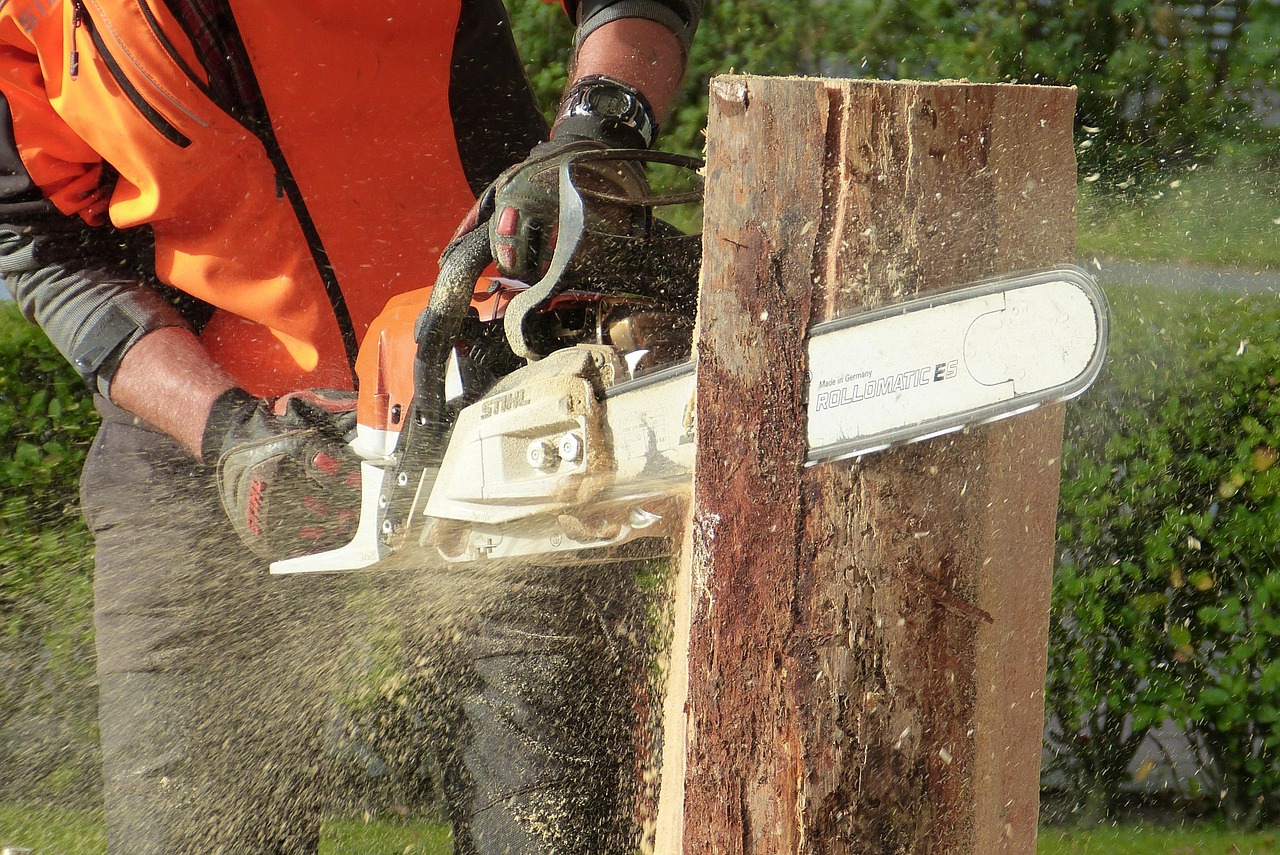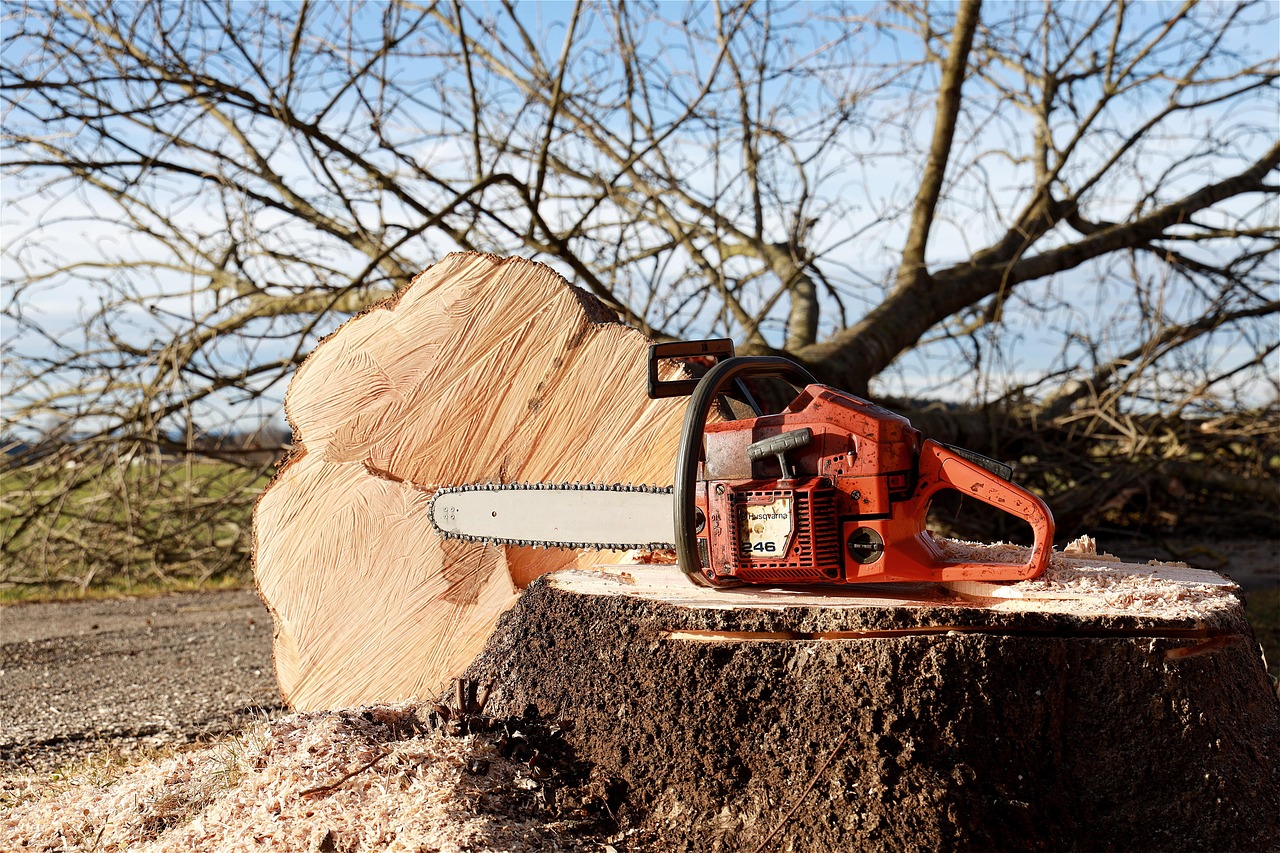Proper tree pruning near gazebos and pergolas enhances safety, health, and aesthetics. Regularly trimming overgrown branches improves sunlight penetration, reduces storm damage risks, and promotes healthy growth. Employing correct techniques and tools ensures long-term safety and beauty, making your outdoor space more enjoyable and secure year-round.
Gazebos and pergolas are popular features in many gardens and backyards. They provide shade, create a relaxing space, and enhance the overall landscape design. However, when trees grow near these structures, they can pose several challenges. Overgrown branches may block sunlight, create unwanted debris, or even cause structural damage during severe weather. Therefore, regular tree pruning is essential to maintain the health of the trees and the integrity of the gazebo or pergola.

Pruning involves selectively removing certain parts of a tree to improve its structure and promote healthy growth. This process is not only beneficial for the trees but also for the surrounding landscape. It helps in shaping the trees, allowing them to complement the architecture of gazebos and pergolas.
The Importance of Pruning
Pruning offers numerous benefits that go beyond mere aesthetics. Here are some key reasons why tree pruning is important, especially around gazebos and pergolas:
- Improves Air Circulation: Pruning helps in opening up the canopy of the trees. This enhances airflow, which is vital for the health of the tree and reduces the risk of fungal diseases.
- Enhances Light Exposure: Proper pruning allows more sunlight to reach the gazebo or pergola, creating a brighter and more inviting space.
- Reduces Risk of Damage: By removing dead or overgrown branches, you mitigate the risk of them falling on structures or people during storms.
- Encourages Healthy Growth: Regular pruning stimulates new growth and can lead to a healthier tree overall.
- Maintains Aesthetic Appeal: Well-pruned trees enhance the visual appeal of your outdoor space, ensuring that it remains beautiful throughout the seasons.
Understanding when and how to prune is essential for maximizing these benefits. The timing of pruning can vary depending on the species of tree and its growth cycle. Most trees benefit from pruning during their dormant period in late winter or early spring before new growth begins. However, some flowering trees may require different timing to ensure they bloom beautifully.

| Tree Type | Best Time to Prune | Notes |
|---|---|---|
| Deciduous Trees | Late Winter to Early Spring | Prune before new growth begins for best results. |
| Evergreens | Late Spring | Light pruning can be done year-round. |
| Flowering Trees (Spring) | Right After Blooming | Avoid late winter pruning to preserve blooms. |
| Flowering Trees (Summer) | Late Winter to Early Spring | Prune before new growth for optimal flowering. |
When pruning around gazebos and pergolas, it is important to assess not only the tree itself but also the structure’s location. Consider how branches might grow in relation to the gazebo or pergola over time. Regular maintenance can prevent potential issues before they arise.
Additionally, employing proper techniques while pruning is vital. Here are some best practices to keep in mind:
- Use Sharp Tools: Always use clean and sharp pruning shears or saws to make clean cuts.
- Avoid Topping: Topping trees can cause serious damage. Instead, focus on thinning out branches.
- Observe Growth Patterns: Understand how your particular tree species grows when planning your cuts.
- Make Clean Cuts: Cuts should be made at a slight angle to help water runoff and prevent disease.
The role of tree pruning cannot be understated when it comes to maintaining a safe and beautiful environment around gazebos and pergolas. By investing time in proper tree care, not only do you enhance your outdoor space, but you also contribute to a healthier landscape overall.

As you plan your pruning strategy, it is also wise to consider hiring a professional arborist for larger trees or complicated situations. They possess the expertise needed to ensure that the job is done correctly and safely.
Ultimately, making tree pruning a regular part of your outdoor maintenance will result in a more enjoyable and visually appealing area around your gazebo or pergola.
Choosing the Right Tools for Tree Pruning
Having the right tools is essential for effective tree pruning. Different types of tools serve specific purposes, making the task easier and more efficient. Here are some common tools used for pruning trees around gazebos and pergolas:

- Hand Pruners: Ideal for small branches and precise cuts. They are easy to handle and perfect for minor trimming.
- Loppers: These are larger than hand pruners and can cut thicker branches. They provide extra leverage for more substantial cuts.
- Pruning Saws: Used for cutting larger limbs that cannot be handled by pruners or loppers. They come in various sizes and are designed for different types of cuts.
- Pole Pruners: Useful for reaching high branches without a ladder. They often have a saw blade and a pruner at the end of a long pole.
- Safety Gear: Items such as gloves, safety goggles, and hard hats should be worn to protect yourself while pruning.
Each tool has its unique benefits and should be chosen based on the specific needs of your pruning task. Regular maintenance of your tools is also crucial. Keeping them sharp and clean ensures better performance and longevity.
Timing Your Pruning Efforts
The timing of tree pruning can significantly impact the health and appearance of your trees. Knowing when to prune is vital for achieving optimal results. Here are some general guidelines for timing your pruning tasks:
- Late Winter to Early Spring: This is the most common time for pruning deciduous trees before new growth begins. It allows you to see the tree’s structure clearly without leaves obstructing your view.
- After Flowering: For flowering trees, prune immediately after they bloom to avoid cutting off next year’s flowers.
- Summer Pruning: This can help manage growth and reduce the size of trees, but it should be done carefully to avoid stressing the tree.
- Fall Pruning: Generally, it is not recommended as it may stimulate new growth that could be damaged by winter frost.
By adhering to these guidelines, you will ensure that your trees remain healthy and vibrant while enhancing the beauty of your outdoor space.
Techniques for Effective Pruning
Effective pruning involves more than just cutting branches. It requires understanding the structure of the tree and using techniques that promote healthy growth. Here are some essential pruning techniques to consider:
- Thinning: This technique involves removing selected branches to improve air circulation and light penetration. It helps in preventing overcrowding.
- Heading Back: Shortening branches to a bud or lateral branch encourages bushier growth. This technique is particularly useful for shaping trees.
- Crown Reduction: This involves reducing the height or spread of the tree. It is essential for trees that may grow too close to gazebos or pergolas.
- Cleaning: Removing dead, damaged, or diseased branches helps improve the overall health of the tree.
The right technique will depend on the type of tree and its specific growth habits. Taking the time to research and understand these methods will lead to more successful pruning outcomes.
Common Mistakes to Avoid When Pruning
Pruning can be a straightforward task if done correctly, but there are common mistakes that many people make. Here are some pitfalls to avoid:
- Topping Trees: Cutting off the top of a tree can lead to severe damage, as it encourages weak growth and can make the tree more susceptible to disease.
- Improper Cuts: Making cuts too close to the trunk or leaving stubs can harm the tree. Always cut just above a bud or lateral branch.
- Neglecting Tree Health: Focusing solely on aesthetics while ignoring signs of disease can lead to bigger problems down the line.
- Ignoring Safety Precautions: Not using safety equipment can lead to accidents. Always prioritize safety when working with tools and climbing ladders.
Avoiding these mistakes will not only protect your trees but also ensure that your outdoor space remains safe and beautiful.
Pruning Specific Types of Trees
Different types of trees require different pruning approaches. Understanding the specific needs of each tree species will help you achieve better results. Below are some popular types of trees and their pruning requirements:
| Tree Type | Pruning Needs | Special Considerations |
|---|---|---|
| Maple Trees | Prune in late winter before sap starts to flow. | Avoid heavy pruning in the fall. |
| Pine Trees | Prune in late spring after new growth emerges. | Avoid cutting into old wood as it may not regrow. |
| Cherry Trees | Best pruned in late winter or early spring after the danger of frost has passed. | Treat cuts with care to prevent disease. |
| Birch Trees | Prune in late summer to early fall after leaf drop. | Avoid spring pruning due to sap flow. |
By recognizing these specific needs, you can ensure that each tree thrives in its environment while also complementing your gazebo or pergola beautifully.
Incorporating these techniques and knowledge into your pruning routine will enhance both your trees and your outdoor structures, creating a harmonious living space.
Understanding Tree Health and Maintenance
Maintaining the health of trees is crucial for ensuring their longevity and beauty, especially around structures like gazebos and pergolas. Understanding the signs of tree health and how to care for them can significantly enhance your landscape. Here are essential aspects of tree health to consider:
Signs of a Healthy Tree
A healthy tree exhibits several characteristics. Recognizing these signs will help you determine if pruning or other interventions are necessary:
- Vibrant Leaves: Healthy trees have lush, green leaves without discoloration or spots.
- Strong Branch Structure: Branches should be sturdy, with no signs of breakage or excessive drooping.
- Stable Growth: A healthy tree will consistently grow each year, adding new rings and height.
- No Pests or Diseases: Check for signs of insects, fungi, or any abnormalities on the bark and leaves.
Common Tree Diseases and Pests
Understanding potential threats to tree health is vital. Here are some common diseases and pests that can affect trees:
- Powdery Mildew: A fungal disease that presents as a white powdery substance on leaves, indicating stress.
- Root Rot: Caused by overwatering or poorly drained soil, leading to tree decline.
- Aphids: Small insects that suck sap from leaves, causing yellowing and stunted growth.
- Bark Beetles: These pests bore into the bark, disrupting nutrient flow and leading to tree decline.
If you notice any signs of these issues, it’s important to take action quickly. Early intervention can often save a tree before the problem escalates.
The Role of Fertilization
Fertilization is another key aspect of maintaining tree health. Proper nutrients support growth and resilience against diseases. Here’s how to effectively fertilize trees around gazebos and pergolas:
Choosing the Right Fertilizer
Selecting appropriate fertilizers can significantly enhance tree growth. Consider the following types:
- Organic Fertilizers: Made from natural materials, these promote healthy soil and sustainable growth.
- Synthetic Fertilizers: These provide quick-release nutrients but should be used cautiously to avoid over-fertilization.
- Slow-Release Fertilizers: These gradually supply nutrients over time, reducing the risk of nutrient spikes.
When and How to Fertilize
The timing of fertilization is critical for optimal results. Here are some guidelines:
- Spring Application: Apply fertilizer in early spring as trees begin to emerge from dormancy.
- Soil Testing: Conduct tests to determine nutrient needs before applying fertilizer, ensuring a balanced approach.
- Avoid Over-Fertilization: Excess nutrients can lead to rapid growth that weakens the tree and makes it susceptible to pests.
Proper fertilization not only nourishes your trees but also helps them thrive in their surroundings, making them compatible with nearby structures.
Watering Practices for Healthy Trees
Irrigation plays a crucial role in maintaining tree health, particularly during dry spells. Here are some effective watering practices:
Watering Techniques
Effective watering ensures that trees receive adequate moisture without becoming waterlogged. Consider these techniques:
- Deep Watering: Water deeply but infrequently to encourage deep root growth. This method helps trees withstand drought better.
- Drip Irrigation: Employ drip systems near the base of trees to provide targeted water without soaking the foliage.
- Avoid Watering Foliage: Watering the leaves can lead to fungal issues; focus on the soil instead.
Signs of Underwatering or Overwatering
It’s essential to monitor your trees for signs of improper watering. Here are indicators for both conditions:
- Underwatering Signs: Wilting leaves, leaf drop, and dry soil indicate insufficient moisture levels.
- Overwatering Signs: Yellowing leaves, moldy soil, and root rot can occur from excessive moisture.
Adjusting your watering schedule based on these signs will help maintain optimal moisture levels for healthy tree growth around your gazebo or pergola.
The Benefits of Mulching
Mulching is an excellent practice for maintaining soil health and supporting tree growth. It offers numerous benefits, especially in landscaped areas with gazebos and pergolas:
- Moisture Retention: Mulch helps retain soil moisture, reducing the need for frequent watering.
- Weed Suppression: A layer of mulch helps prevent weeds from competing with your trees for nutrients and water.
- Soil Temperature Regulation: Mulch insulates the soil, keeping it cooler in summer and warmer in winter.
- Nutrient Enrichment: As organic mulch breaks down, it adds nutrients back into the soil, promoting healthy tree growth.
The application of mulch around trees is simple yet effective. Aim for a depth of about 2-4 inches, keeping it a few inches away from the trunk to prevent rot. By incorporating mulching into your maintenance routine, you will greatly enhance the health of your trees surrounding your outdoor structures.
Implementing these strategies will not only benefit your trees but also contribute to a thriving landscape that enhances the beauty of your gazebo or pergola area.
Creating a Pruning Schedule
Establishing a pruning schedule is essential for maintaining the health of trees around gazebos and pergolas. A well-thought-out plan can help you stay organized and ensure that your trees receive the care they need at the right times. Here are some steps to create an effective pruning schedule:
- Assess Tree Types: Determine which species of trees are present in your landscape. Each type has specific pruning requirements and optimal times for pruning.
- Calendar Planning: Use a calendar to mark key dates for pruning activities based on seasonal needs and the specific growth patterns of your trees.
- Set Reminders: Utilize digital reminders or alerts to notify you when it’s time to carry out pruning, fertilization, or watering tasks.
- Document Progress: Keep a journal of your pruning activities, noting the date, technique used, and any observations about tree health.
By developing a structured schedule, you can ensure that your trees receive consistent care throughout the year, promoting strong growth and minimizing the risk of disease.
Working with Professionals
While many tree care tasks can be performed by homeowners, certain situations may require professional assistance. Here are some scenarios where hiring an arborist or tree care specialist is advisable:
- Larger Trees: If you have large trees that require significant pruning or pose safety risks, it’s best to consult with an expert.
- Complex Pruning Needs: Trees that have unique shapes or growth patterns may benefit from the specialized knowledge of professionals.
- Disease Management: If you suspect that your trees are suffering from diseases or pest infestations, an arborist can provide accurate diagnostics and treatment options.
- Emergency Situations: After severe weather events, you may need assistance assessing damage and safely removing hazardous branches or trees.
Working with trained professionals can help safeguard the health of your trees while ensuring that you maintain a safe environment around your gazebo or pergola.
Sustainable Practices in Tree Care
In addition to regular pruning and maintenance, adopting sustainable practices will help enhance the environment surrounding your outdoor structures. Here are some eco-friendly approaches to consider:
- Composting: Use organic matter and yard waste to create compost, which can enrich the soil around your trees.
- Native Plant Selection: Choose native tree species that are well adapted to your local climate and require less maintenance.
- Water Conservation: Implement rainwater harvesting systems to collect water for irrigation, reducing reliance on municipal sources.
- Pest Management: Utilize integrated pest management (IPM) strategies that focus on natural pest control methods instead of chemical pesticides.
These sustainable practices not only promote healthier trees but also contribute positively to the ecosystem in your garden area.
Protecting Your Investment
Your gazebo or pergola represents an investment in your outdoor living space. Ensuring that surrounding trees are healthy and well-maintained is crucial for protecting this investment. Neglected trees can lead to structural damage, increased maintenance costs, and decreased property value. By implementing consistent tree care practices, you safeguard both your outdoor structures and the overall beauty of your landscape.
Final Thoughts
Tree pruning around gazebos and pergolas is more than just a maintenance task; it is an integral part of creating a healthy and beautiful outdoor environment. Regular pruning ensures that trees remain vibrant, safe, and aesthetically pleasing. By understanding the timing, techniques, and tools involved in tree care, homeowners can effectively manage their landscape.
The health of your trees directly impacts the ambiance and functionality of your outdoor spaces. Implementing proper watering, fertilization, mulching, and pest management strategies will ensure that your garden thrives. Additionally, creating a regular pruning schedule and knowing when to seek professional help will enhance the longevity of both your trees and structures.
Embracing sustainable practices will not only benefit your personal outdoor space but also contribute positively to the broader environment. Ultimately, investing time and effort into tree care will yield significant rewards, making your gazebo or pergola area a peaceful retreat for years to come.
